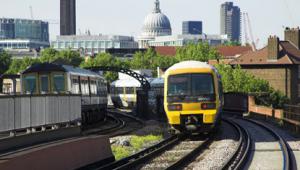The annual increase of regulated fares, which include season tickets, is set by the RPI measure of inflation over the 12 months to July. Rail minister Claire Perry said the 1% increase meant wages are increasing faster than rail fares for the first time in more than a decade.
The main Consumer Prices Index inflation rate stood at 0.1% in the year to July, the ONS also confirmed, moving back into positive territory after being flat in the figure for the 12 months to June.
Responding to the figures, Perry highlighted that the government had ended the policy of fare rises being as high as the RPI rate plus 3 percentage points.
“As part of our long-term economic plan, we are investing record amounts in transforming the UK’s rail network in order to provide better journeys for everyone, and fares have an important role to play in delivering this investment,” she said.
“But I know that many families are concerned about the cost of rail travel, which is why we are putting an end to above inflation fare increases. This will make a real difference to household budgets, saving season ticket holders around £425 each over the next five years.”
For the first time since 2002, fares are increasing slower than wages, which were estimated by the ONS to have risen by 2.4% in the three months to the end of June compared to the same period a year ago.
Today’s figures for CPI inflation showed it had moved into positive territory because clothing prices were not falling as fast as they had in 2014, although this was partially offset by bigger falls in food and beverage prices.
CPI has been at or close to zero since the start of 2015 due to the impact of lower oil prices on the economy and slowing global growth.
An analysis of the figures by the Centre for Economics and Business Research concluded that the continuing weakness in the world economy means the current period of “noflation” is likely to continue in the UK.
“It’s hard to see where any significant inflationary pressure will come from in the remainder of 2015 and 2016, and the UK could be on course to see inflation below the Bank of England’s central 2% target until 2017,” said Scott Corfe, CEBR’s head of macroeconomics.
“In response to this, expect monetary policy to remain looser for longer than many expect,” Corfe added. “In the UK, the Bank of England will almost certainly keep rates on hold until the first half of next year. If the global economy weakens further and we start to import more deflation, rates could be on hold for even longer.”





















